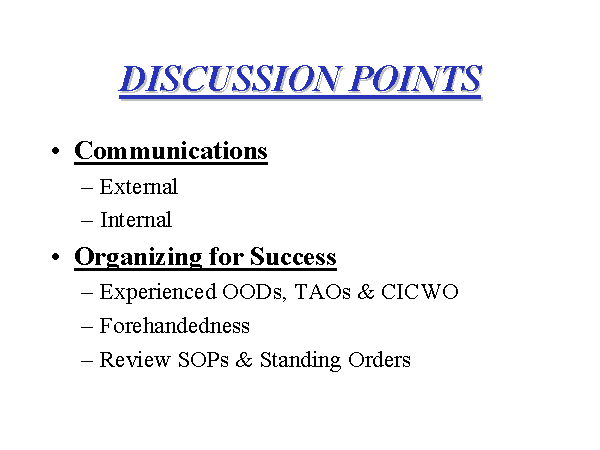Slide 60 of 62
Notes:
- Good communications are essential to safe operations. Know which circuits are being guarded on the aviation ship bridge, not everyone you talk to on the big deck ship is in a ship control station. CDC is not one large space, but a number of modules, and communications with the CDC do not always reach the TAO or the bridge. If you need to talk to the TAO or OOD make sure you specifically ask for them. It is very difficult to conduct time-sensitive communications via flashing light, TADIX, or BGIXS; however, with the proliferation of BG Cellular Telephones this can be an option if all else fails.
- A common thread to a number of collision case studies is the lack of internal communications between CIC and the bridge. This just doesn’t happen, even with the best people on watch, you must constantly work on internal comms and build confidence in your team’s ability to work together.
- Operating in close proximity to CVNs or other aviation ships is not the time to bring your department heads to the bridge for the first time after standing TAO for several months. How you structure your watch bill is critical to success - this is another common thread in a number of case studies and is definitely a command decision and should not be taken lightly!
- Train the watch team to take the initiative. Their job is to give you, the CO, time to make critical decisions. They must be thinking ahead and not just reacting to the unexpected. They must know what you consider your “bail-out” considerations, must work hard at maintaining communications with the aviation ship, and know when they might be “out of sight, out of mind” on the bridge of the aviation ship and request to be detached at the completion of flight ops.
- Establish the correct mind set on your bridge and in CIC by having the watch teams review your standing orders and the aviation ship’s SOP. The CO must make this a personal training point with the watch teams.















